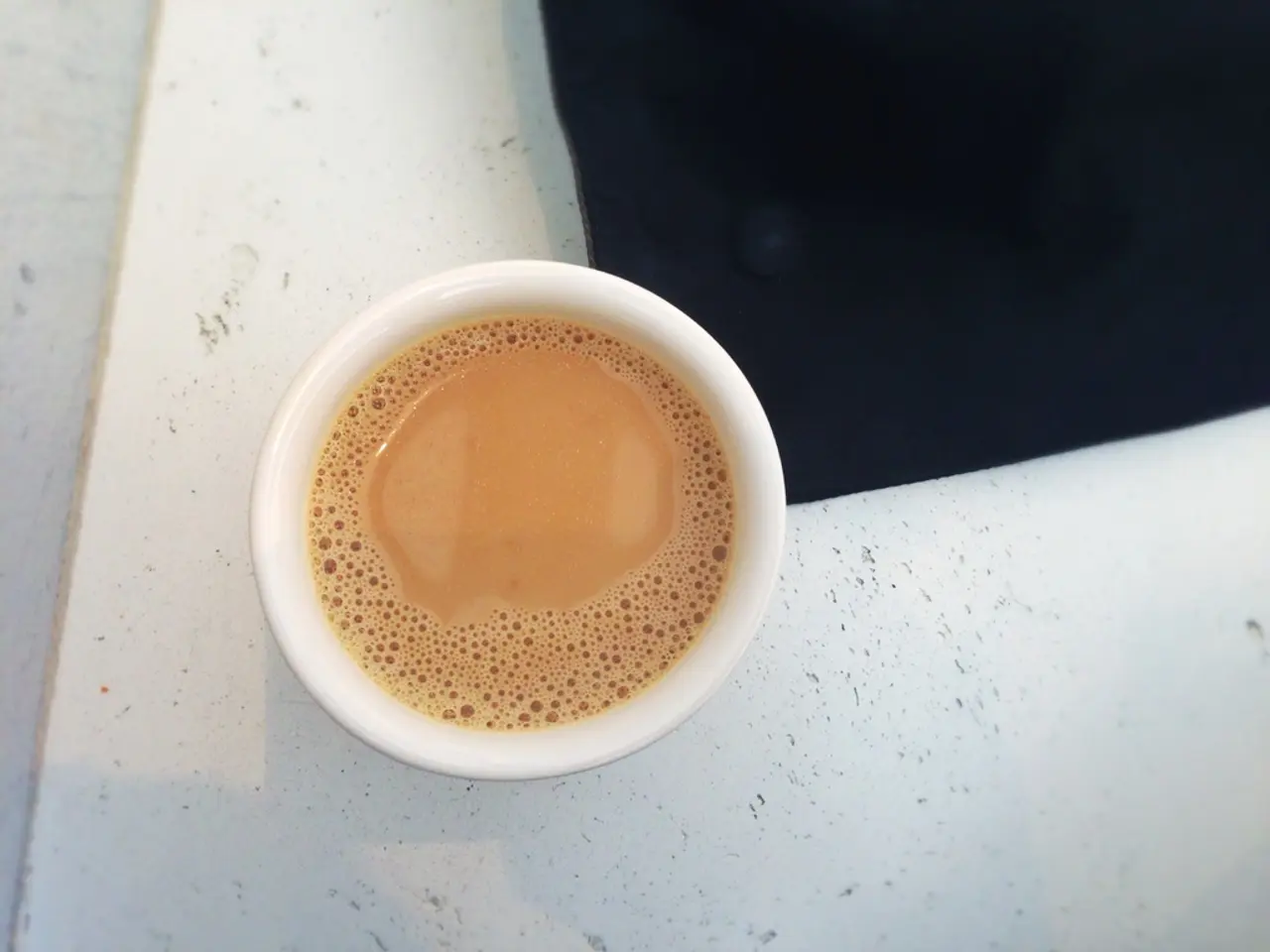Matcha: The Japanese Green Tea Packed with Health Advantages
=====================================================================================================
In the heart of Japanese culture and tradition lies a unique green tea known as matcha, a finely ground powder that has deep roots in both Chinese origins and Japanese adaptations.
A Brief History of Matcha
Tracing its roots back to the Tang Dynasty in China (618–907 CE), matcha's origins can be found in the steaming, compressing, and grinding of tea leaves into cakes before being powdered for preparation. This practice, notably used in social and ritual settings, was particularly popular during the Song Dynasty. However, as loose-leaf tea gained prominence in the Ming era (1368–1644), the use of powdered tea waned in China.
Japanese Buddhist monks brought green tea seeds from China to Kyoto temples in the 12th century. They used tea powder to create a calming, meditative drink that was integral to Zen Buddhist practice. Over time, Japanese monks and aristocrats refined the tea’s preparation into a uniquely Japanese tradition known as chado or the “way of tea.”
By the 16th century, the tea ceremony (chanoyu or sado) was formalized, with tea masters like Sen no Rikyu emphasizing simplicity, tranquility, and spiritual depth. This period also saw innovations in tea cultivation, such as shading tea plants in Uji to yield sweeter leaves, and the development of specialized utensils and bowls. This ceremonial preparation became deeply embedded as a cultural and spiritual discipline reflecting Japanese aesthetics and values.
Matcha: More Than Just a Beverage
Matcha is more than a drink; it is a symbol of Japanese tradition, philosophy, and artistry. The tea ceremony embodies principles of harmony, respect, purity, and tranquility, connecting participants to a mindful way of life. It has influenced various Japanese cultural arts, including architecture, costume, porcelain, literature, and painting, reflecting the tea ceremony’s broad social and artistic impact.
In historical Japan, matcha tea was initially a drink of the religious elite, including samurai, before spreading more widely. By the late 19th century, learning tea ceremony etiquette became important for embodying Japan’s cultural identity amid modernization, particularly for women managing households.
Today, matcha continues to resonate globally, appealing to younger generations as a healthy, calming alternative to coffee while carrying centuries of tradition and cultural reverence with it.
The Modern Matcha Experience
Matcha is used in various areas of gastronomy, including drinks, desserts such as mochi, and various baked goods. One popular modern adaptation is the matcha latte, which can be made by following the traditional matcha recipe but using less water for a denser mixture, adding your choice of milk, frothing it if desired, heating it or adding ice cubes, mixing with a sweetening ingredient, and pouring the matcha into the cup.
The traditional matcha ceremony takes place in a serene and clean environment, emphasizing the importance of purity and simplicity. A cup of matcha is shared among friends, symbolizing harmony and unity. The traditional ceremony requires specific accessories, such as a wide and shallow bowl, a bamboo whisk ("chasen"), a spatula ("chashaku"), or their electric equivalents.
Matcha's Nutritional Benefits
Matcha is rich in theanine, chlorophyll, and antioxidants like beta-carotene and vitamin C. It is known for providing energy and increasing concentration for up to 8 hours without increasing anxiety. Additionally, matcha has immune-boosting and detoxifying effects, and it is believed to improve skin and prevent aging.
The Legacy of Matcha
The Zen monk Eisai is credited with planting the first matcha seeds in a Kyoto temple in 1191 and being the first person to consume matcha as a hot drink. Since then, matcha has been at the center of the tea ceremony, stimulating the mind while bringing the necessary calm for meditation. The first seeds of matcha were imported to Japan by Chinese Buddhist monks.
In the tea ceremony, a moment of relaxation and an ode to precision and slow gestures, matcha remains a testament to Japan's rich cultural heritage and its enduring connection to Zen philosophy.
- Exploring global cuisines, one can discover the unique taste of matcha, a powdered green tea rooted in both Chinese and Japanese traditions, often used in food-and-drink preparations.
- For those pursuing a sustainable-living lifestyle, matcha offers an opportunity to indulge in healthy-cooking practices, as it is rich in antioxidants like beta-carotene and vitamin C.
- As matcha continues to influence global-cuisines, home-and-garden enthusiasts may also find inspiration in its contemplative preparation tools and their traditional designs.
- In the realm of lifestyle choices, matcha's calming properties, deep roots in Japanese tradition, and mindful preparation make it an attractive option for those seeking a connection to history and artistry in their daily routines.




